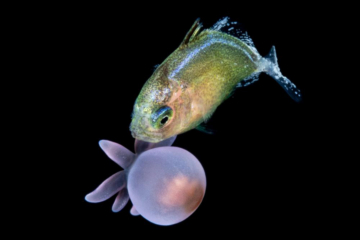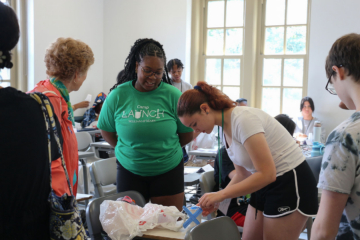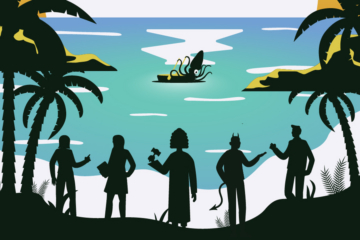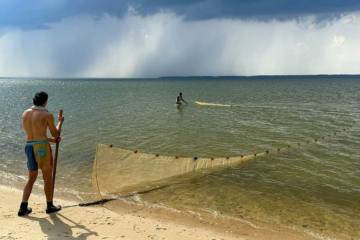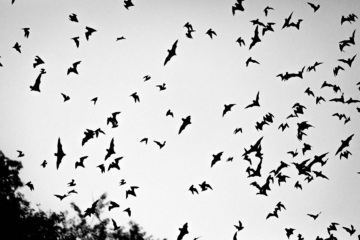Blackwater photos suggest new symbiosis between fish and anemones
The following story originally appeared on the website for W&M’s Batten School & VIMS. – Ed.
A new manuscript in the Journal of Fish Biology reveals that relationships between fish and sea anemones are more diverse than those portrayed in “Finding Nemo.” Captured through breathtaking blackwater photography, the images featured in the article show rarely seen encounters between these creatures that may provide mutual benefits.
Gabriel Afonso, lead author and Ph.D. student at William & Mary’s Batten School of Coastal & Marine Sciences & VIMS, said that the emerging field of blackwater photography, or images captured by night-time divers, made this study possible.
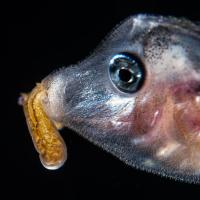
Rich Collins is one of the divers who contributed to the article and a consultant at the Florida Museum of Natural History. He has witnessed lots of surprising interactions between tiny organisms since he started doing blackwater photography, such as filefish carrying box jellyfish in their mouths despite their dangerous sting.
“Some species of vulnerable larval or juvenile fish use invertebrate species apparently for defensive purposes,” Collins said. “They’ll find something that’s noxious or stingy, and they just carry it around.”
The pictures featured in the article show how this behavior extends to other juvenile fish and larval anemone interactions. Filefish, driftfish, pomfrets, and a young jack can be seen carrying larval tube anemone or button polyps in their mouths, possibly for protection.
While adult fish are known to cling to corals for rest and other purposes, the way these juveniles seem to be using anemones for self-defense is still not fully understood. While the sting from a larval anemone might not be enough to kill a predator, it would be “unpalatable,” Afonso said.
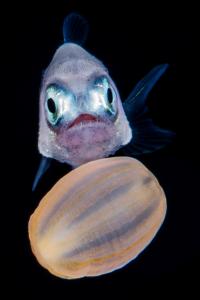
This could be a new form of mutualism between fish and anemone, because the anemone could also benefit from being carried by the fish as a form of dispersion.
“The anemones have a relatively low speed compared to juvenile fish,” Afonso said. “As far as I know, this is the first relationship of an open water fish interacting physically with an anemone that looks to be carrying the invertebrate.”
Afonso hopes that this article sheds more light on the previously unseen world revealed by blackwater photography and sparks people’s curiosity about the many different interactions happening between fish and invertebrates of all shapes and colors.
Visit the Wiley Online Library to read the full article.
Latest W&M News
- W&M’s Center for Gifted Education expands pre-collegiate summer campsOfferings strengthen access and year-round support for Virginia students.
- Raft Debate 2025: Who will keep their spot on the raft?The beloved W&M tradition returns Oct. 28 starting at 6 p.m. in the Sadler Center’s Commonwealth Auditorium.
- An average year for juvenile striped bass in Virginia waters in 2025Preliminary results from an ongoing long-term survey suggest that an average year class of young-of-year striped bass was produced in the Virginia tributaries of the Chesapeake Bay in 2025.
- Helping students fulfill their civic dutyAs part of its commitment to democracy, W&M is dedicated to helping students, faculty and staff participate in elections.
- Uncovering layers of historyAs part of the team uncovering the foundations of the historic Williamsburg Bray School, Heather Little M.A. ’23 and Madeline Dorton ’24 are unearthing the history of the campus where they studied history and archaeology as students.
- Harnessing the sun to help the nightGraduate student Bryce Donaghue M.S. ’26 studies solar farms as potential habitats for bats.



